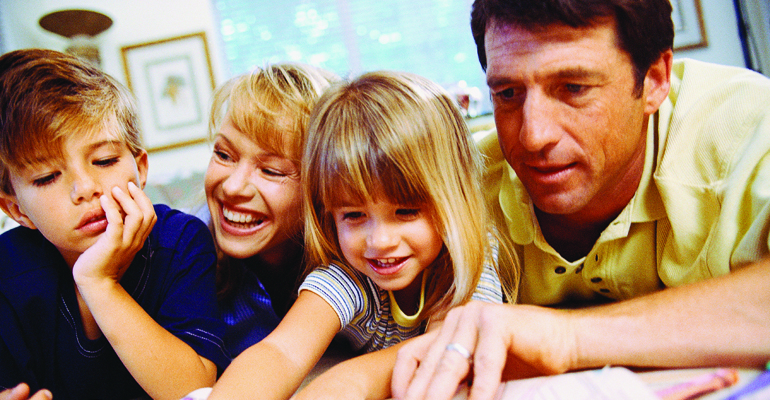Have you wanted to make a lifebook for your child from the day you adopted her? If this venture has somehow eluded you — relax! Now that your six- to eight-year-old is learning to read and write, you can take on the project together.
Telling the Tale
By early grade school, some children show an increased interest in and understanding of adoption, and have new questions about their story. Others become aware of being different and have a hard time putting feelings into words.
By creating a lifebook together — a volume that traces a child’s story from birth to adoption — families can find new ways to communicate. In the process of working together, choosing photographs or other means to illustrate an early life story, a parent and child can broach delicate, intimate topics, says Beth O’Malley, an adoption social worker and author of Lifebooks: Creating a Treasure for the Adopted Child.
To get started, dig out those boxes of mementos and photos. Spend some time choosing the special things that will help tell your child’s tale. Get reprints of photographs and color copies of original documents you plan to use.
Then work together to outline the book. Talk about what you’d like to include, such as facts about and photographs of the city where your child was born; information about her birth parents, other caregivers, or social workers; or recollections of her early life. Jot down all the ideas you’ve generated.
When you’re ready to start writing, you will have a few options, depending upon your child’s interest and ability.
- You can do the actual writing as you tell the story together.
- You can write down your child’s words as she talks, then have her write or type the final copy on a computer.
- Your child can write or type as you tell the story together.
Some children want to compose their story from a first-person point of view, using language like “I remember living in a little white house.” Others need more distance, preferring “Mallory lived in a little white house.” As you work, let the conversation flow — and be your child’s guide, says O’Malley.
Once you’ve written a few pages, decide how you want to arrange the photos and mementos. Attach them with acid-free tape or glue, available in the craft section of many stores. Now let your child get creative, by adding artwork or poetry, or by decorating the pages with stickers and markers.
Finally, remember that there’s no right or wrong way to make a lifebook. Your goal is not perfection, but simply to cultivate understanding, communication, and closeness that comes from working on the project together.



